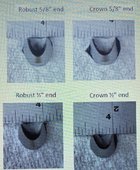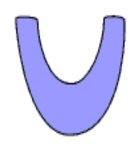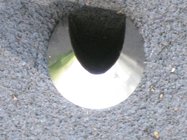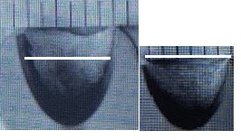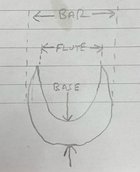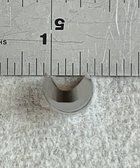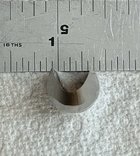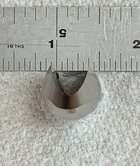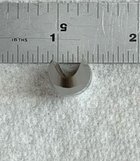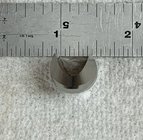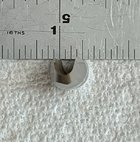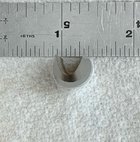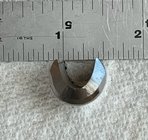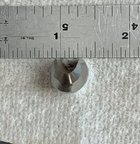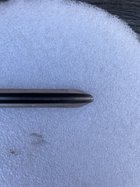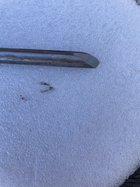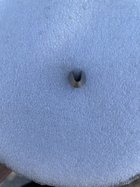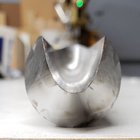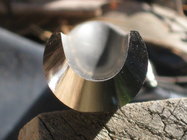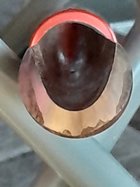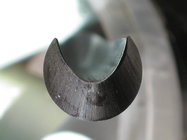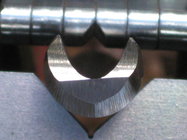I’ve used parabolic bowl gouges for a number of years and wanted to purchase another one late last year. I chose to purchase 3 Robust gouges (3/8”, 1/2”, 5/8”). Errantly I assumed all parabolic grinds were essentially the same with 5/8” bar gouges all having 1/2” flutes, etc.
The 5/8” is my ‘go-to’ bowl gouge and I couldn’t figure out why I kept gravitating back to my Crown 5/8” vs the Robust 5/8”, especially finishing cuts etc. A week or so ago I started investigating further and found the Robust 5/8” flute was significantly narrower leaving the bar on each side of the flute significantly thicker. When I compared to an older Henry Taylor 5/8” I found that was also very similar to the Crown.
Interestingly this same relationship of the flute/bar did not carry to the 3/8” and 1/2” Robust gouges, their flutes were wider more like other parabolics I’ve used and much more comfortable to my use. In fact, the Robust 1/2” bar gouge has a flute nearly as wide as the 5/8” bar Robust gouge. The inconsistency within a manufacturer across bar sizes surprised me a lot.
I don’t know for sure, but I think this is the crux of my preference for the 5/8” Crown over Robust. I want to get another 5/8”, but think I’ll wait a little until I’ve used the Robust even more and see if I can force myself to be more comfortable with it, or if I keep going back to the Crown (I like some other attributes of the Robust including it’s flat top and where it comes from).
Attached are some pics I took before I remembered this thread and so didn’t follow @Neil S conventions. I also apologize for the screenshot pic but I’m having difficulty combining pictures
I’ll also add my thanks again to @Neil S for the info contained in this thread AND my support again of his summarizing all of this into an AAW article
Ron
Many thanks for those details.
I've flipped the images of the end-on view of the flutes so that they can be seen in the same orientation as the others flutes in this thread...
And, yes, the Robust 5/8" flute profile is definitely different and is quite close to the original Roy Child flute design (Roy's diagram on left), so has very good pedigree! The Woodfast flute (on right) was also quite close to the that original profile, so the the Robust 5/8"is in good company...
Ron, I would persist with that Robust 5/8" for a bit longer. Perhaps vary your grind on it to find the sweet spot for it and for you.
As you have pointed out, the flute profile does make a difference to how the bevel grind interacts with the flute and then on how the gouge performs. Much attention is given to bevel grinds as that is what turners can most readily change and flutes tend to be only mentioned in terms of chip ejection. But, flute profiles are the fundamental factor in cutting edge geometry and how we turn with them, which was the primary purpose of this thread, ie. to raise awareness of flute profiles and getting more clarity into the descriptors we use for them.
Of course, experienced turners can turn with almost any flute profile, but they do not always communicate clearly about the way in which those flute profiles change the way they grind and turn with them. That can also apply to tool makers.
On making this thread into an AAW article, that would be a snapshot of the current situation, but hopefully we will see ongoing developments and new offerings, which a thread like this can include with further updates.
Last edited:

